Egg shape, color and size are remarkable adaptations for successful reproduction.
Enlarge
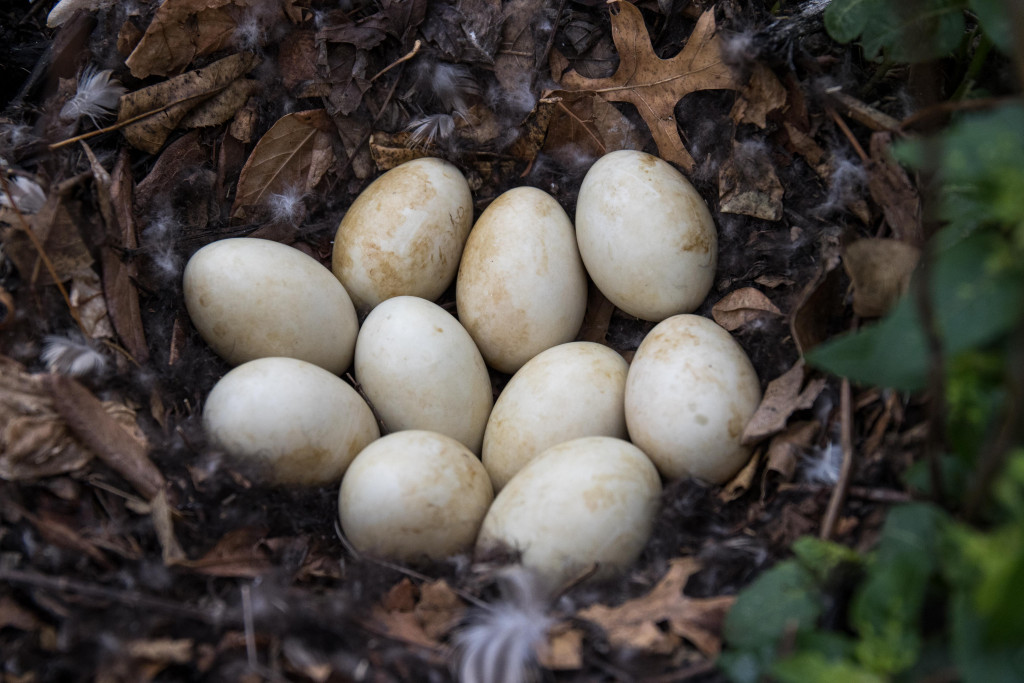
Photo by Jeff Kurrrus, Nebraskaland Magazine.
By Monica Macoubrie, Wildlife Education Specialist
Eggs are fascinating biological structures that serve as the cornerstone of reproduction for numerous species across the animal kingdom. From the familiar chicken egg to the exotic eggs of reptiles and insects, the world of animal eggs is as diverse as the species that lay them.
In this article, we explore the various types of eggs laid by different species and uncover the remarkable adaptations and strategies that have evolved for successful reproduction.
Bird Eggs
Birds are perhaps the most well-known egg-laying animals, and Nebraska is home to a plethora of avian species. These birds lay eggs of various sizes, shapes and colors, each adapted to their specific nesting habits and environmental conditions. In addition, bird eggs exhibit an astonishing array of colors and patterns, aiding in camouflage, thermoregulation and the detection of parasites.
Western Meadowlark
The western meadowlark, a familiar sight across the grasslands of Nebraska, lays eggs that are typically pale greenish-blue or grayish white, adorned with intricate speckles and blotches that provide effective camouflage amidst the grassy landscape. The eggs are carefully incubated in shallow, cup-shaped nests constructed by the female, often hidden amidst dense vegetation or grass tufts.
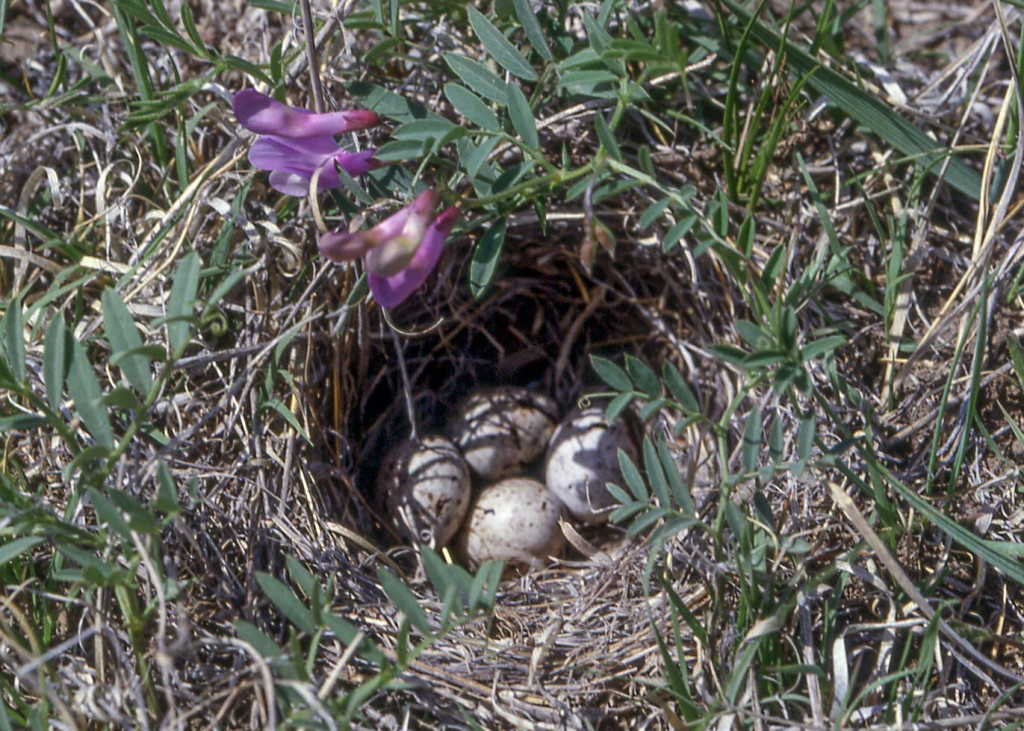
American Robin
American robins, iconic symbols of spring in Nebraska, lay eggs that are both delicate and resilient. Typically, a clutch consists of three to five eggs, each showcasing a beautiful sky-blue coloration. These eggs are adorned with speckles of various shades, ranging from brown to black, creating a unique pattern that camouflages them amongst the foliage of trees and shrubs where they nest.
Funny enough, according to the Crayola Crayon website, “Robin Egg Blue” is one of the top 50 favorite colors among Americans. It is also Britney Spears’s “absolute favorite color.”
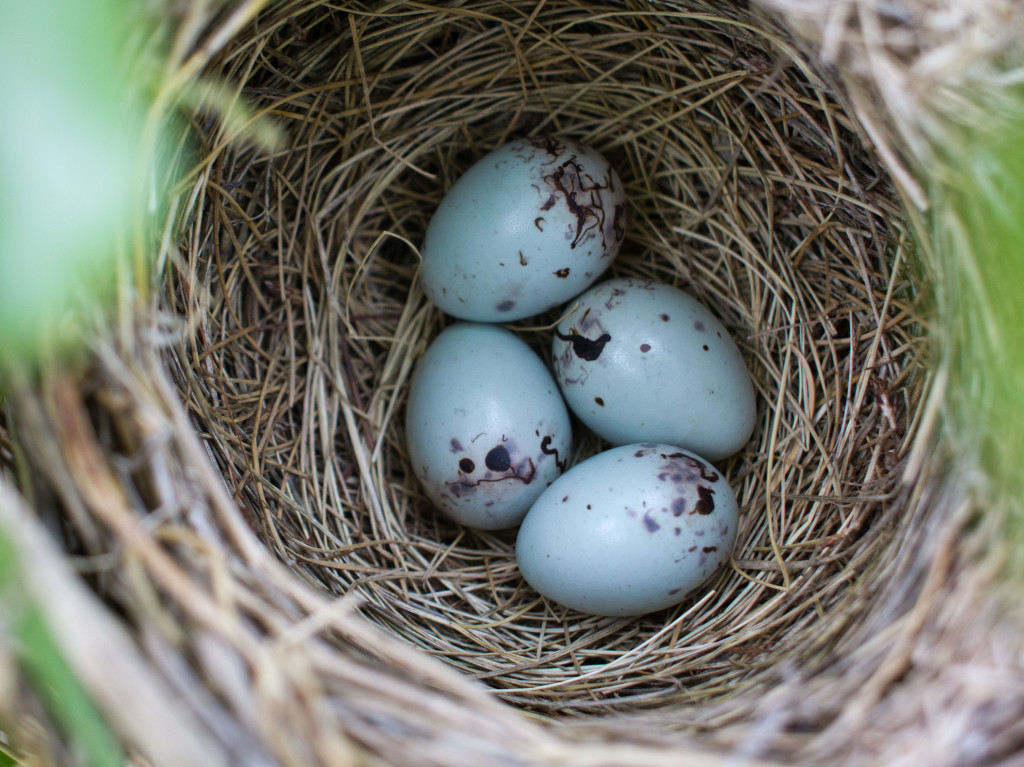
Peregrine Falcon
Peregrine falcons, renowned for their aerial prowess and speed, lay eggs that reflect their adaptation to cliffside habitats. Typically, a clutch comprises of three to four eggs, each boasting a creamy white base color with irregular reddish-brown blotches. These markings provide effective camouflage against the rocky outcrops where the falcons construct their nests, known as eyries.

Reptile Eggs
Reptiles, including snakes, turtles and lizards, also lay eggs as part of their reproductive process. Unlike birds, which have hard-shelled eggs, reptile eggs typically have leathery shells that allow for gas exchange with the environment. Reptile eggs are laid in a variety of places, including underground burrows, leaf litter and even within the bodies of the mother in viviparous species. Some reptiles, such as the American alligator, construct elaborate nests to protect their eggs from predators and regulate temperature for optimal development.
Northern Painted Turtles
One of the most common turtle species in Nebraska, the painted turtle, lays its eggs in shallow nests dug in sandy soil near the water’s edge. The eggs are elliptical in shape.
The development of most turtle eggs is temperature-dependent, with warmer temperatures typically resulting in faster incubation and hatching. In Nebraska’s temperate climate, turtle eggs undergo incubation for several weeks to several months, depending on environmental conditions. Once the eggs hatch, the young turtles emerge from the nest and must fend for themselves, facing numerous challenges as they navigate their way to the safety of nearby water bodies.
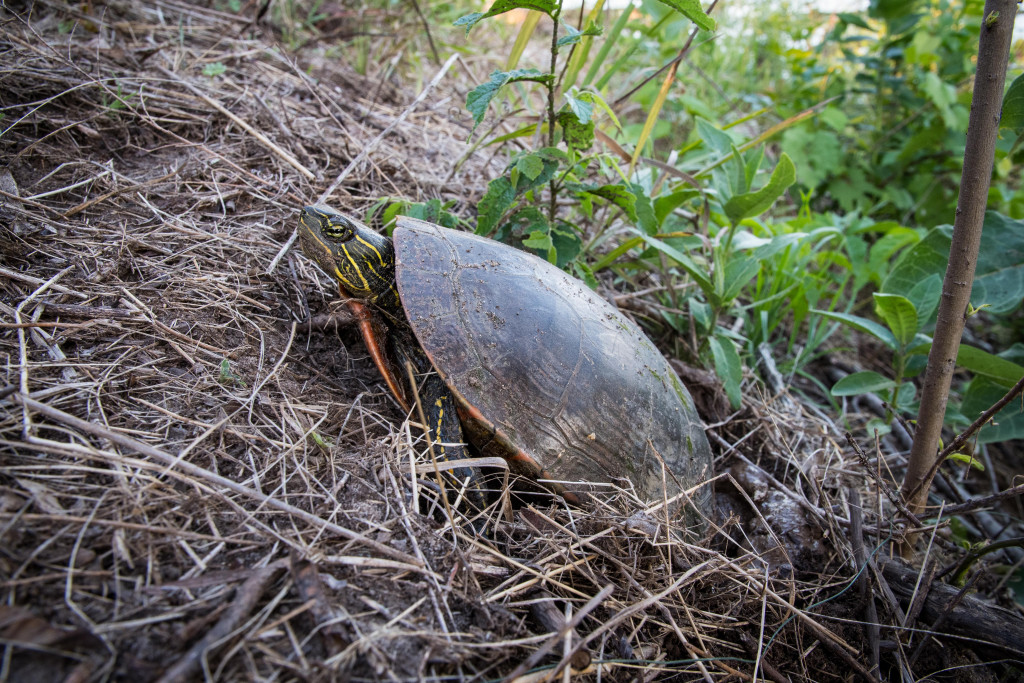
Bullsnake
In Nebraska, the bullsnake is a prominent species known for its impressive size and distinctive appearance. Female bullsnakes typically lay eggs in late spring or early summer, seeking out sandy or loose soil in which to create their nests. These nests are often located in open areas such as grasslands, prairies or agricultural fields. Bullsnake eggs are elongated and covered in a tough, leathery shell, providing protection from the elements and potential predators.
The number of eggs laid can vary, with clutch sizes ranging from a few to over a dozen eggs, depending on factors such as the age and size of the female. Once laid, the female covers the eggs with soil and vegetation to conceal them from predators and to maintain an optimal temperature for incubation.
Amphibian Eggs
Amphibians, such as frogs, toads and salamanders, display remarkable reproductive strategies for both aquatic and terrestrial egg-laying behaviors. Many amphibians lay their eggs in water, where they develop into tadpoles before metamorphosing into adults. The eggs of amphibians are typically laid in gelatinous masses or strings, providing protection from predators and maintaining moisture levels essential for embryonic development.
Frogs
In Nebraska, frog eggs are a common sight in the state’s wetlands, ponds and other aquatic habitats, especially during the spring breeding season. Female frogs typically lay their eggs in gelatinous masses, which are often attached to submerged vegetation or other structures. These egg masses can vary in size and appearance depending on the species, with some resembling clusters of clear jelly and others containing thousands of individual eggs.
The eggs are small and spherical, each containing a developing embryo surrounded by a protective membrane. Frog eggs are laid in shallow water to ensure proper oxygenation and temperature regulation for the developing embryos. Over the course of several days to weeks, the embryos gradually develop into tadpoles.
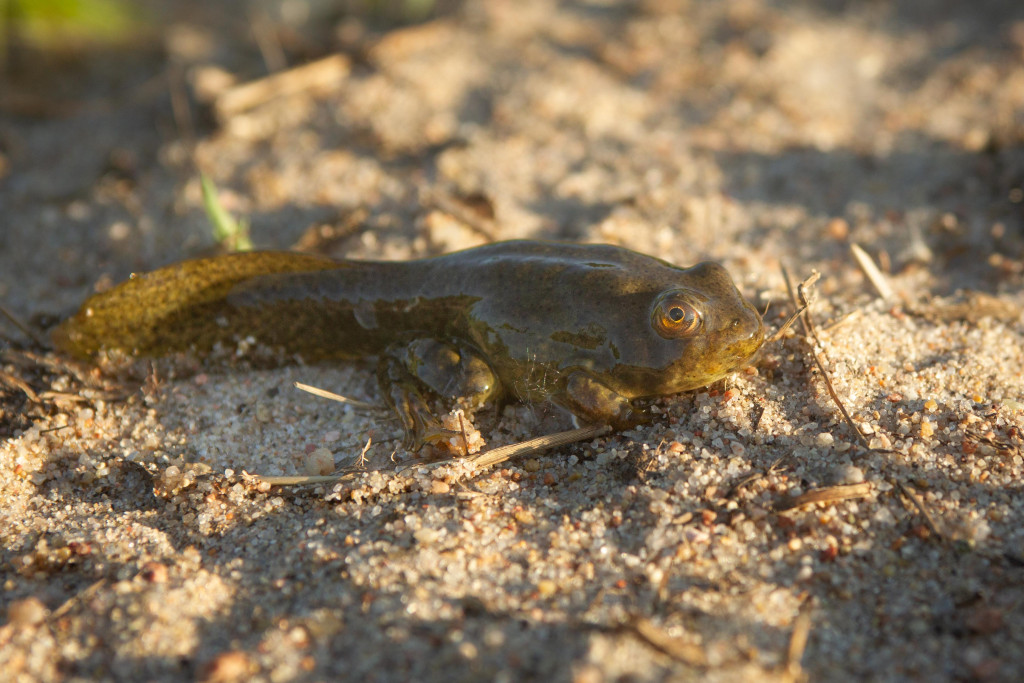
Toad Eggs
Female toads typically lay their eggs in long strings or strands, which are wrapped around submerged vegetation or other objects in shallow water. These egg strings can contain hundreds to thousands of individual eggs, arranged in a gelatinous matrix to protect them from predators and environmental fluctuations. Toad eggs are small and spherical, resembling black beads within the jelly-like mass. The females carefully select suitable breeding sites with still or slow-moving water to ensure the eggs have ample oxygen and are shielded from strong currents.
Insect Eggs
With an estimated 1 million species worldwide, insects represent the most diverse group of egg-laying animals. Scientists at Harvard University built a database with descriptions of eggs for more than 6,700 insect species. From this data, they determined that the beautiful, yet wildly variable eggs are most likely evolutionary responses to the environments in which each insect lays its eggs, such as on wood, artificial surfaces or glued to the underside of leaves.
Butterfly Eggs
Female butterflies lay their eggs individually on the leaves of host plants that will provide food for caterpillars once hatched. These eggs are typically small and spherical, often resembling tiny pearls or grains of rice. The choice of host plant varies depending on the species of butterfly, with each species exhibiting specific preferences for particular plant species.
The eggs are strategically placed on the underside of leaves or other protected surfaces to minimize the risk of predation and exposure to harsh weather conditions. Over the course of several days to weeks, the eggs undergo development, with the tiny larvae or caterpillars emerging to feed on the leaves of the host plant.
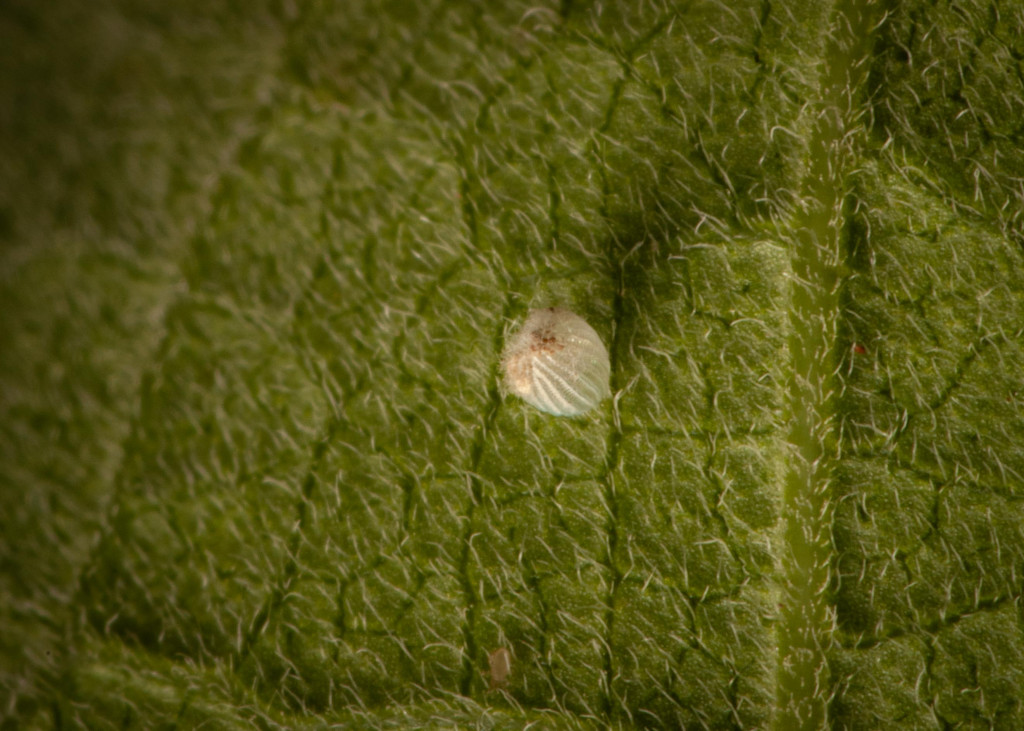
Stink Bug Eggs
In Nebraska’s agricultural landscapes, stink bug eggs are a common sight, especially on crops such as soybeans, corn and fruits. Female stink bugs typically lay their eggs in clusters on the underside of leaves or other suitable surfaces of preferred host plants. These egg clusters often are arranged in neat rows and covered with a sticky substance that helps with adherence.
Stink bug eggs are small with a characteristic barrel-like structure and pale coloration. The female stink bugs carefully select suitable oviposition sites to ensure the survival of their offspring, often choosing plants with abundant food resources and favorable environmental conditions.
Wasp Eggs
Female wasps typically lay their eggs in individual cells within nests constructed from materials such as mud, wood fibers or plant matter. These nests can be found in a variety of locations, including trees, buildings and underground burrows. Wasp eggs are tiny and elongated, resembling grains of rice and are carefully deposited by the female within each cell of the nest. The female wasps provision each cell with paralyzed or dead insects, which serve as food for the developing larvae once they hatch from the eggs. Over the following days to weeks, the eggs undergo development, with the larvae feeding voraciously on the provided food until they pupate and emerge as adult wasps.
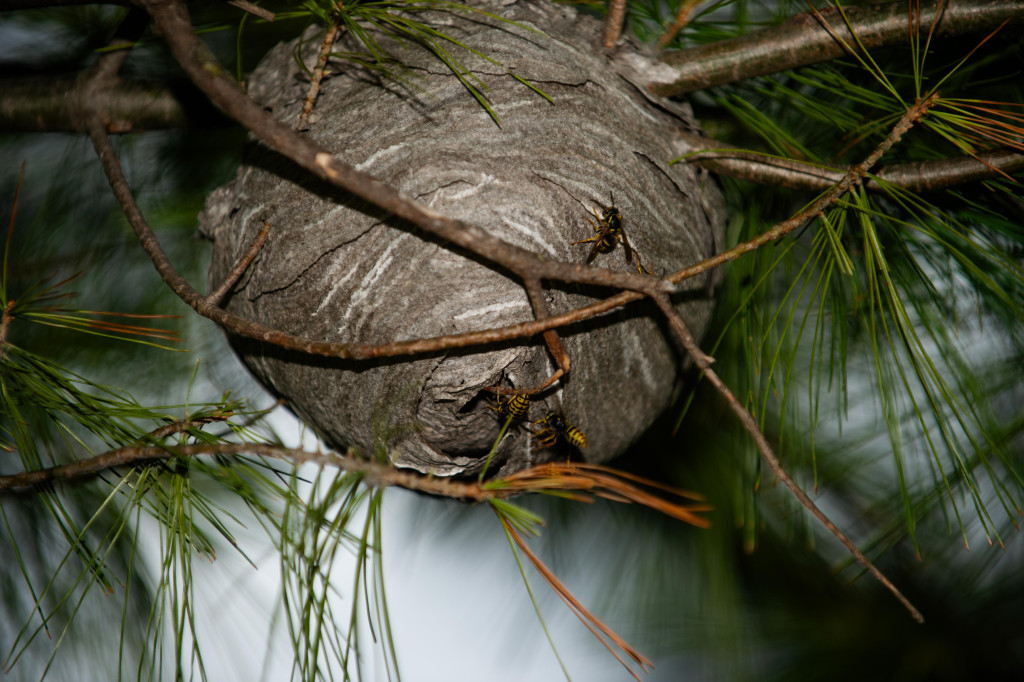
Whether it’s the carefully crafted nests of birds, the buried clutches of reptiles, the gelatinous masses of amphibians or the meticulously placed eggs of insects, each type of egg represents a unique adaptation to the challenges of reproduction in the natural world. By studying the different types of eggs laid by various species, we gain insight into the complex web of life and the remarkable strategies that have evolved to ensure the survival of countless organisms on our planet.
The post The Diversity of Eggs appeared first on Nebraskaland Magazine.
















